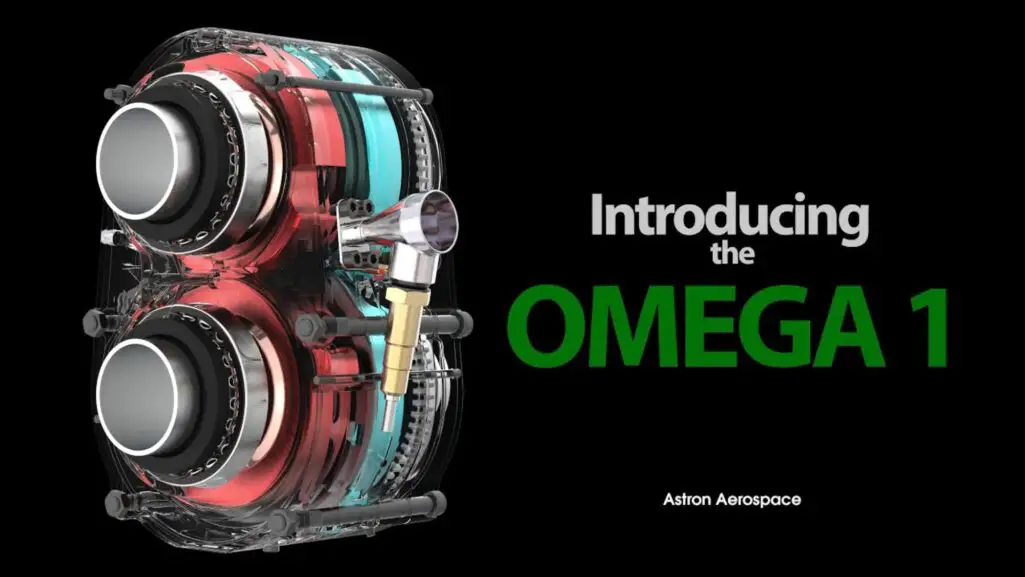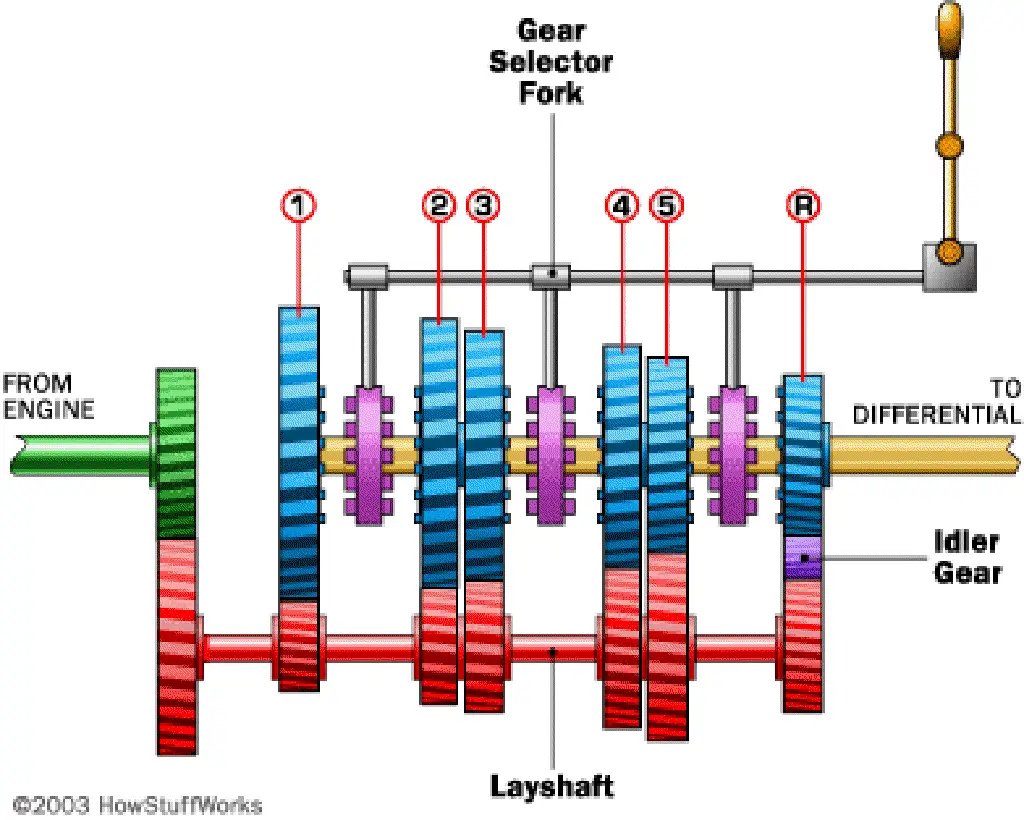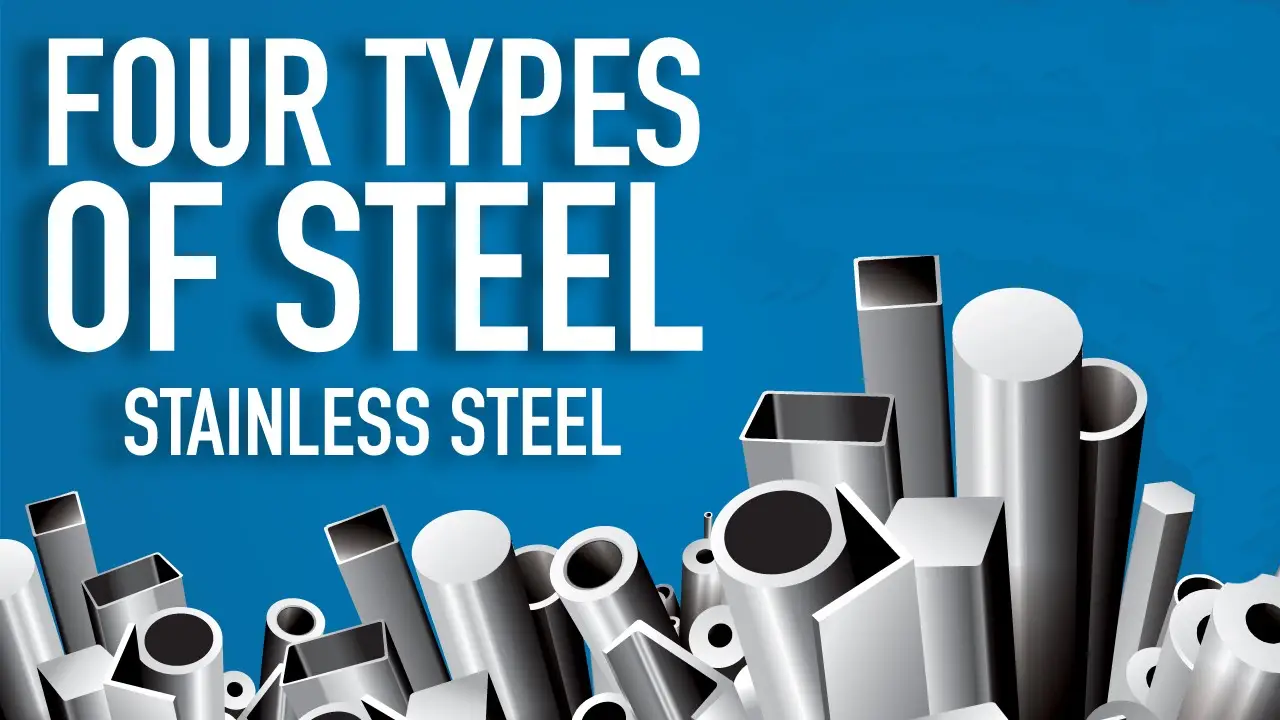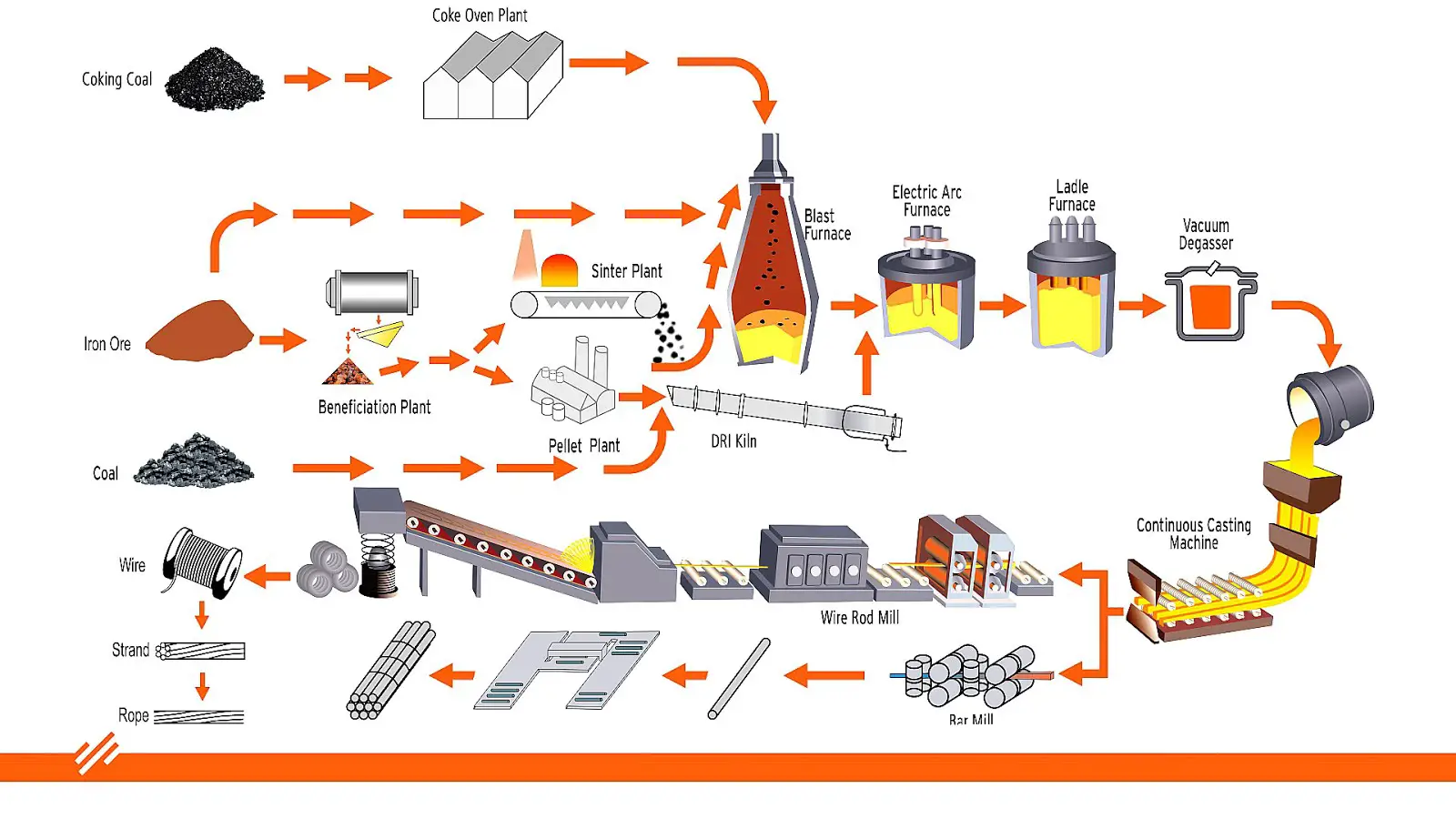What is Heat Treatment Process?
Heat treatment is a process that combines heating and cooling operations to achieve desired qualities in a metal or alloy in the solid state. The transformation or decomposition of austenite occurs in all basic heat-treating methods for steel.
Any steel’s physical and mechanical qualities are determined by the nature and appearance of these transition products. The difference in temperature use within thick and thin sections of objects with varied cross-sections should be examined, and provisions should be taken to slow the heating of the thinner portion whenever possible to reduce thermal stress and dispersion.

Courtesy: rapiddirect.com
Purpose of Heat Treatment:
- To improve a material’s mechanical qualities such as hardness, tensile strength, shock resistance, flexibility, and corrosion resistance.
- Internal metal stresses induced by hot or cold working are relieved
- To increase machinability and decrease brittleness.
- To improve magnetic and electric characteristics
- To alter or refine the grain size.
- Corrosion and wear resistance must both be improved.
- To increase the hardness of the material’s surface.
- To increase the fatigue limit of medium and small-sized parts such as gears, wrist pins, shafts, etc.
- Heat treatment improves steel’s hardening capabilities, allowing it to cut other metals.
- To provide the hardened surface with a clean, bright, and appealing appearance.
- Case hardening is used to create a robust core.
- To make a structure more uniform.
The 3 Stages of the Heat Treatment Process:
1. The Heating Stage:
The key objective of the heating stage is to keep temperatures consistent. If a part is heated unevenly, one piece may expand quicker than another, causing deformation or fracture. Slow heating is used to achieve uniform temperatures, and numerous factors determine a part’s heating rate. The metal’s heat conductivity is an essential consideration.
A metal with higher heat conductivity heats up more quickly than one with lower conductivity. The rate at which a metal may be heated is also determined by its condition. Heat hardened tools and parts more slowly than unstressed or untreated metals.
Finally, the heating rate is affected by the size and cross-section of the object. Slower heating rates are required for parts with a large cross-section to keep the inside temperature near the surface temperature and avoid warping or cracking. When the heating rate is kept slow, parts with irregular cross-sections receive uneven heating, but they are less likely to be cracked or significantly distorted.
2. The Soaking Stage:
The soaking stage aims to retain the metal at the right temperature until the correct internal structure emerges. The “soaking duration” refers to how long the metal is kept at the proper temperature. You’ll need the chemical analysis and mass of the metal to figure out how long it took. The soaking period for unequal cross-sections can be calculated using the largest section.
The metal temperature should not be brought from room temperature to soaking temperature in one step. Rather, carefully heat the metal below the temperature at which the structure will change, then keep it there until the temperature is consistent throughout.
You can fast heat the temperature to the final degree you’ll require after this “preheating” stage. To prevent warping, parts with more intricate designs may require many layers of preheating.
3. The Cooling Stage:
Once the metal has been wet, it must be brought to room temperature before the heat-treating procedure can be completed. It would be best to have a cooling medium in direct contact with the metal to cool it down.
The cooling rate is determined by the metal and end characteristics. The cooling rate is also affected by the cooling media; thus, the cooling medium chosen has a significant impact on the final qualities. Quenching is rapidly cooling metal in the oil, water, brine, or other liquid.
Because most metals are rapidly cooled during the hardening process, quenching is often connected with hardening; nevertheless, quenching does not always result in greater hardness; for example, copper is commonly quenched in water to anneal it. Other metals, such as air-hardened steels, are hardened by cooling them slowly.
Because some metals break or distort easily during quenching while others do not, the quenching medium must be selected to match the metal for metals that need to cool quickly; oil combinations are better for metals that need to cool slowly. Carbon steels are typically water-hardened, while alloy steels are oil-hardened. Water is used to quench non-ferrous metals.
Which Metals are Suitable for Heat Treating?
In addition to ferrous metals, heat treatment can be used for copper and other metal alloys, such as aluminum, magnesium, brass, nickel, and titanium. All ferrous metals can be subjected to hardening, annealing, normalizing, and stress relief. Steel grades make up the majority of heat-treated metals (around 80%). Cast iron, stainless steel, and various tool steel grades are all ferrous metals that may be heated.
Heating procedures like annealing and solution heat treating can be used with aluminum. Precision is required in the aluminum heat-treatment process. The scope of the process must be defined and monitored for the required qualities at each stage.
Types of Heat Treatments and Usage of Each One:
1. Annealing:
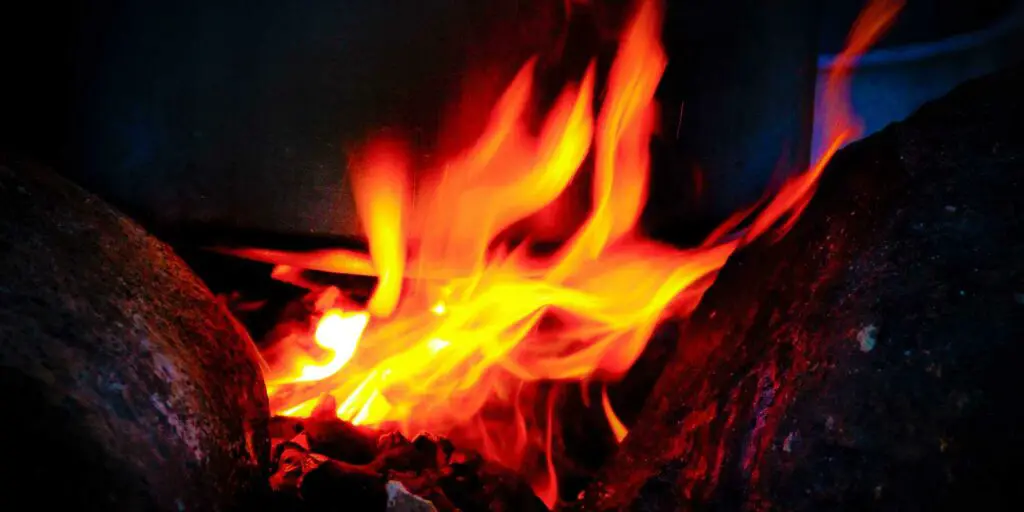
Courtesy: kerone.com
During the annealing process, metals such as aluminum, steel, copper, brass, or silver are heated to a specific temperature and held there for a set of time to change before being air-cooled.
The procedure increases the metal’s flexibility while lowering its hardness, making it easier to work. Most metals may be cooled rapidly or slowly, while ferrous metals like steel must be cooled gradually. Annealing also increases mental stability, allowing tougher metals to be machined without shattering.
Different types of annealing processes are:
i) Full annealing ii) Process annealing iii) Spherodise annealing iv) Diffusion annealing v) Isothermal annealing
Advantages of Annealing:
Annealing improves a metal’s workability, toughness, ductility, and machinability and reduces hardness. The heating and cooling procedure improves metals’ magnetic properties and electrical conductivity.
Disadvantages of Annealing:
In terms of disadvantages, the most common one is that it can take a long time to anneal some materials. It can take a long time to cool down materials that require a high temperature, especially if they are left in an annealing furnace to cool naturally.
2. Normalizing:
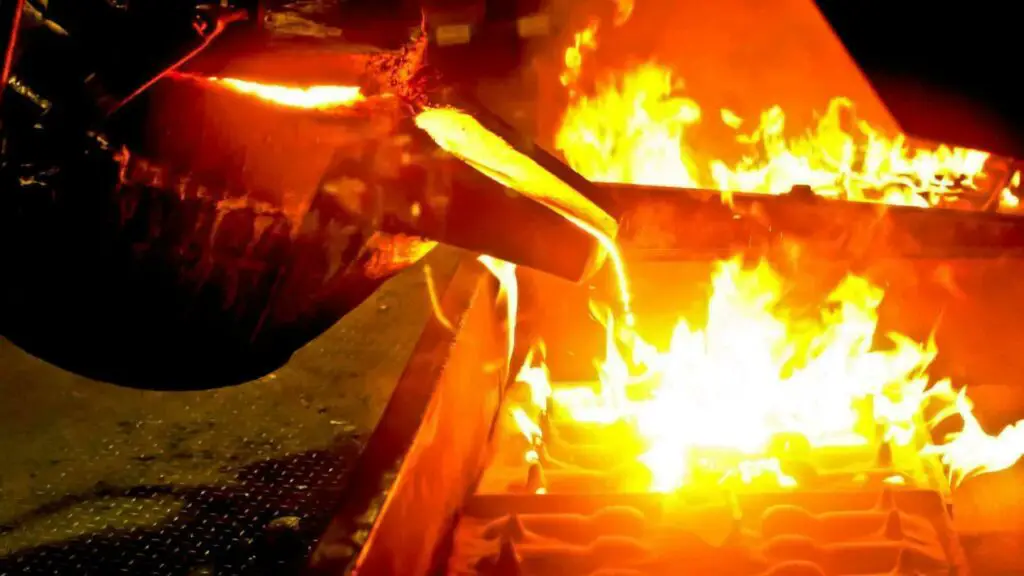
Courtesy: wasatchsteel.com
It follows the same procedure as annealing, but the temperature range, holding period, and cooling rate are all different. If you’re using steel, you’ll need a temperature of between 40 and 50 degrees Celsius over the higher critical point, which you’ll keep for a few seconds before cool-down in still air.
The internal structure of the steel is refined to fine grains, and its mechanical characteristics are improved as a result of this treatment, which removes tension created during initial processes. This treatment improves steel’s impact strength, yield point, and ultimate tensile strength.
Steels that have been normalized are less ductile but stronger and tougher than steels that have been annealed of the same composition. Improved mechanical characteristics are best achieved through a normalizing process, whereas increased machinability and internal stress reduction are best achieved through an annealing process.
Advantages of Normalizing:
Because the cooling rate of normalizing is faster than that of annealing, it is more efficient than annealing. The normalizing cooling rate is faster than the annealing cooling rate. After machining, a normalized part’s surface quality is superior to that of an annealed part. Since air is used as the quenching media, the process is batch-type production. Normalizing is less expensive than annealing because the cooling process does not require additional furnace time.
Disadvantages of Normalizing:
- A steel part’s structure is determined by its thickness since the cooling rate during normalizing might vary at different depths.
- Normalizing produces higher hardness and lower ductility than annealing because of the faster cooling rate.
3. Hardening:
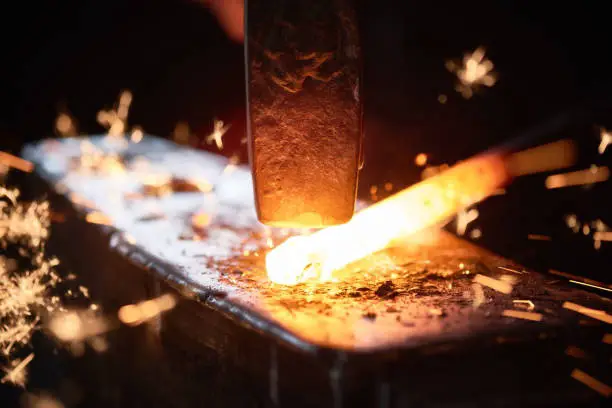
Courtesy: sciencing.com
This method is commonly used on all cutting tools, alloy steel machine parts die, and some chosen machine parts exposed to severe duty work. Steel is heated to a temperature within the hardening range, 30oC to 50oC above the higher critical point for hypereutectoid steels. Then rapidly cooled by quenching in a suitable medium such as water, oil, or salt, during the hardening process.
The steel is hardened in such controlled conditions by quick quenching that the transformation is banned at the lower critical point, forcing the transition to occur at a considerably lower temperature. Transformation cannot occur at the lower critical temperature because of the little time allowed to the metal by quick cooling.
Advantages of Hardening:
Hardening the material with heat treatment can increase its wear resistance. To make metals (such as steel, titanium, Inconel, and some copper alloys) stronger, tougher, more durable, and more resistant to wear, they can either be hardened on the surface (case hardening) or through hardness.
Disadvantages of Hardening:
In the hardening process, larger numbers of forces and heavier and more powerful tools are required, and it’s harder to bend metal. Scale and dirt must be removed from metal surfaces, and to compensate for the loss of elasticity that results from strain hardening, intermediate anneals may be necessary. The additional directional properties will probably be damaging, as will the residual tension.
4. Tempering:

Courtesy: steelfabservices.com.au
Tempering is a method of heat treating iron-based alloys, such as steel to increase their tensile strength. Even though iron-based metals are hard and brittle by nature, they may be too fragile for many common applications. It can alter the metal’s hardness, flexibility, and strength by tempering it.
A temperature below the critical point is used to gently heat the metal, reducing its brittleness while still preserving its hardness. The higher the temperature, the more malleable the metal will be.
It’s also possible to either buy metal that has already been hardened or harden the material before cutting. Tolerances can be maintained more easily if the part is machined, even if it is more complex. It also eliminates the necessity of polishing the item to a final finish.
Advantages of Tempering:
By reducing the tension on the metal, tempering makes it easier to weld or mill. Increases the material’s elasticity and flexibility at the same time. Adding wear-resistant characteristics to the surface or metal as a whole increases hardness and makes it more resistant to wear.
Disadvantages of Tempering:
Since the temperature range for this tempering process is 400-600 C, it has low cooling rates in hot conditions. Stepwise steel tempering can be used for carbon steel products with small cross-sections.
5. Case Hardening:

Courtesy: extrudesign.com
This method hardens the metals outside while leaving the inner malleable. Carbon must be incorporated into the surface of low-carbon iron and steel. As an additional step after the item is machined, case hardening can be utilized to protect the part.
The hardened coating was achieved by using intense heat and a variety of components and chemicals. It is where case hardening comes into its own since it provides a flexible inner layer with a tough outer layer for certain applications:
Different types of case hardening are – Carburizing, Nitriding, Cyaniding, Induction Hardening and Flame Hardening
Advantages of Case Hardening:
The case hardening process strengthens and increases steel durability and enhances the steel’s resistance to wear. Steel’s toughness and impact resistance are improved. Steel’s lifespan is extended, allowing the steel to be welded easier.
Disadvantages of Case Hardening:
In the hardening process, the depth of hardness is not uniform and cannot be regulated properly. At roughly 5500 degrees Celsius, the steel substance is heated and subsequently exposed to atomic nitrogen.
Can You Heat Treat Metal at Home Use an Oven?
In metalworking, the ability to harden steel is critical. Tempering is used to increase the strength and durability of steel. A home oven can be used to temper steel in less than 30 minutes. Heat-treating a piece of metal before tempering is usually the ideal time. Tempering is made much easier when a blank has been chemically toughened.
Steel wool or fine sandpaper can be used to polish the steel blank. Remove all dirt and corrosion from the steel until it is shiny and bright. Make sure your oven is at 400 F before you put anything in it.
Place the steel on a baking sheet or oven rack. After 15 to 20 minutes, remove the metal from the oven and let it cool. Take your time and let it cool down at room temperature. Check the steel’s quality before using it. Even if you may see a yellow tint, corrosion or little cracking indicates that the metal is in danger. There should be no use for steel that has these defects.
How Many Times could Metal be Heat Treated?
Double tempering steel used in the industrial metal, composite, or ceramics production industries is also useful, though at lower temperatures than required for nuclear tempering, often between 450 and 540 degrees Celsius.
Theoretically, decarburization and carbon loss are possible after initial quenching. In actuality, steel can decarburize and lose carbon. When quenched a second time, likely, it will not have the same microstructure and mechanical properties as the first time.
What is the Best Way to Harden Steel?
The desired material properties can be quickly achieved by fast cooling a heated metal using a quenching medium such as water, oil, or air. It is common practice in the steel industry to use quenching as a final step in the heat treatment process to harden the steel further. Quenching protects the steel from breaking down from austenite into ferrite and cementite.
Is it better to Quench in Oil or Water?
Quenching with oil is common because it transfers heat quickly and does not alter the finished product in any major way. Some materials can be damaged or cracked by a water-based caustic quencher, which is even faster than the water-based quencher. Oil cools more slowly than water, but it cools faster than air, making it a good intermediate quenching medium.
Conclusion:
Heat treatment of metals is an excellent way of increasing the mechanical characteristics of metals. Asides from the physical, it can also increase the electrical and magnetic properties of a metal. It further improves the compatibility of the part with different materials.
Metal manufacturing requires heat treatment to be an important part of the process. It improves the metal part’s ability to endure wear and tear. Heat treatment of steel or metals plays a significant function in different industrial processes.

